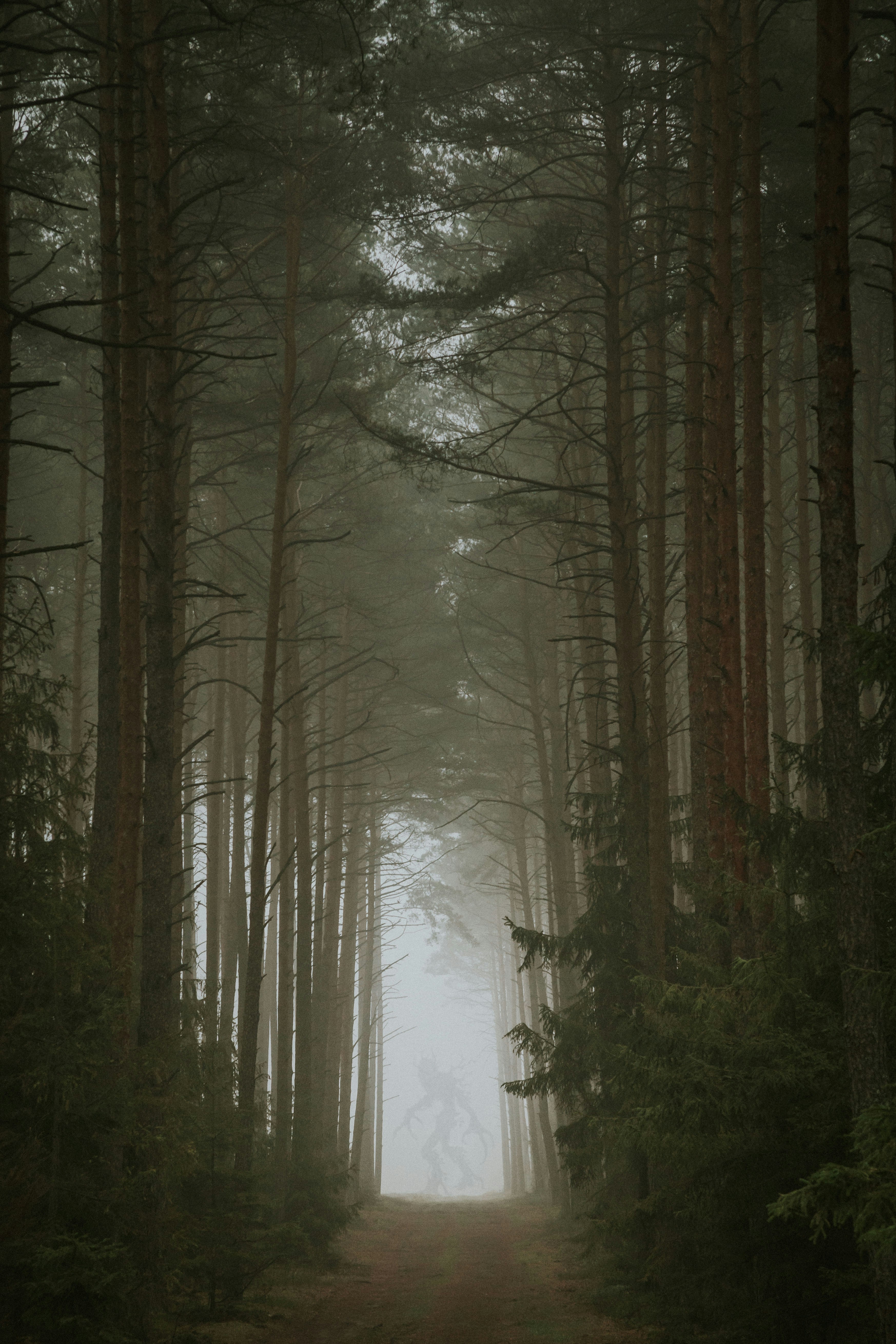
How to beat Goliath
Because size doesn’t matter
I have formulated 6 rules which I call David’s rules. These are for anyone facing the big one ...
Kabini River Resort on the bank of the Kabini Reservior, bordering Nagarhole Tiger Reserve. I am in the Gol Ghar (which is actually rectangular) at tea and snack time after the afternoon safari.
“What did you see?” asked an American who had come to Kabini for the first time.
“Nothing. Totally dry. Five safaris and we saw nothing,” said an extremely bossy Indian woman whose rude behavior was on display wherever she went with the saving grace that nobody was exempt from it. One must be grateful when people with bad manners display them equally for everyone.
Ajeeb! I say to myself. Then I check to see if the people talking were blind or blindfolded. But no. They weren’t. Bright eyes and each had a camera and lens worth at least 3 – 4 laks each. One a Nikon and the other a Sony. But we shall not hold that against them. What was more, this conversation or different versions of it, were happening all around me. So, it wasn’t only this one woman who saw nothing.
How could this be? How can people go for a three-hour drive in one of the most beautiful forests in India and say that they saw nothing? Unless of course one were to ask, “What does seeing mean?”
Well, what did I see?
I saw a silent life and death struggle between a strangler fig and its saprophytic host, a nameless giant of the forest, whose fate was sealed when the first tender filament of the fig started its climb upwards towards the sun. After that it would only be a matter of time, measured in decades perhaps, but the ending, inevitable. The fig strangles the host. As I saw this struggle without motion, I thought how closely it resembles what is happening in our national politics. Politicians of all hues have taken hold of the nation like strangler figs and are busy throttling its life out. There is one exception to this however in our case. Unlike the forest giant, we the people of India, are not helpless. Unless we choose to be. We are not helpless unless we choose to vote for the one who gives us Rs. 200 instead of voting for the one who is most likely to serve our best interests. Rs. 200 doesn’t even buy a chicken. Is this what we have priced our futures and the futures of our generations yet unborn, at? Less than the price of a chicken?
I saw Chital (Axis deer) or Spotted deer in their hundreds. Chital is one of the most beautiful of the deer species. In Nagerhole, they abound. Grass and shrubs are aplenty. The terrain suits them very well. There are predators; Wild dogs (Dhole), leopards (black and regular) and tigers but the Chital simply outbreed them all, so they thrive. Predators also ensure that all the weak die early and only the strong are left to breed so predation helps and promotes survival of prey species. I saw their fawns ranging from some which must have been literally days old to older ones. Chital fawns simply must be the most beautiful creatures on earth. All Chital have liquid black eyes with eyelashes that will give every Bollywood actress a complex. Their coats, golden brown with white spots showing shadowy in the morning mist are a sight to behold.
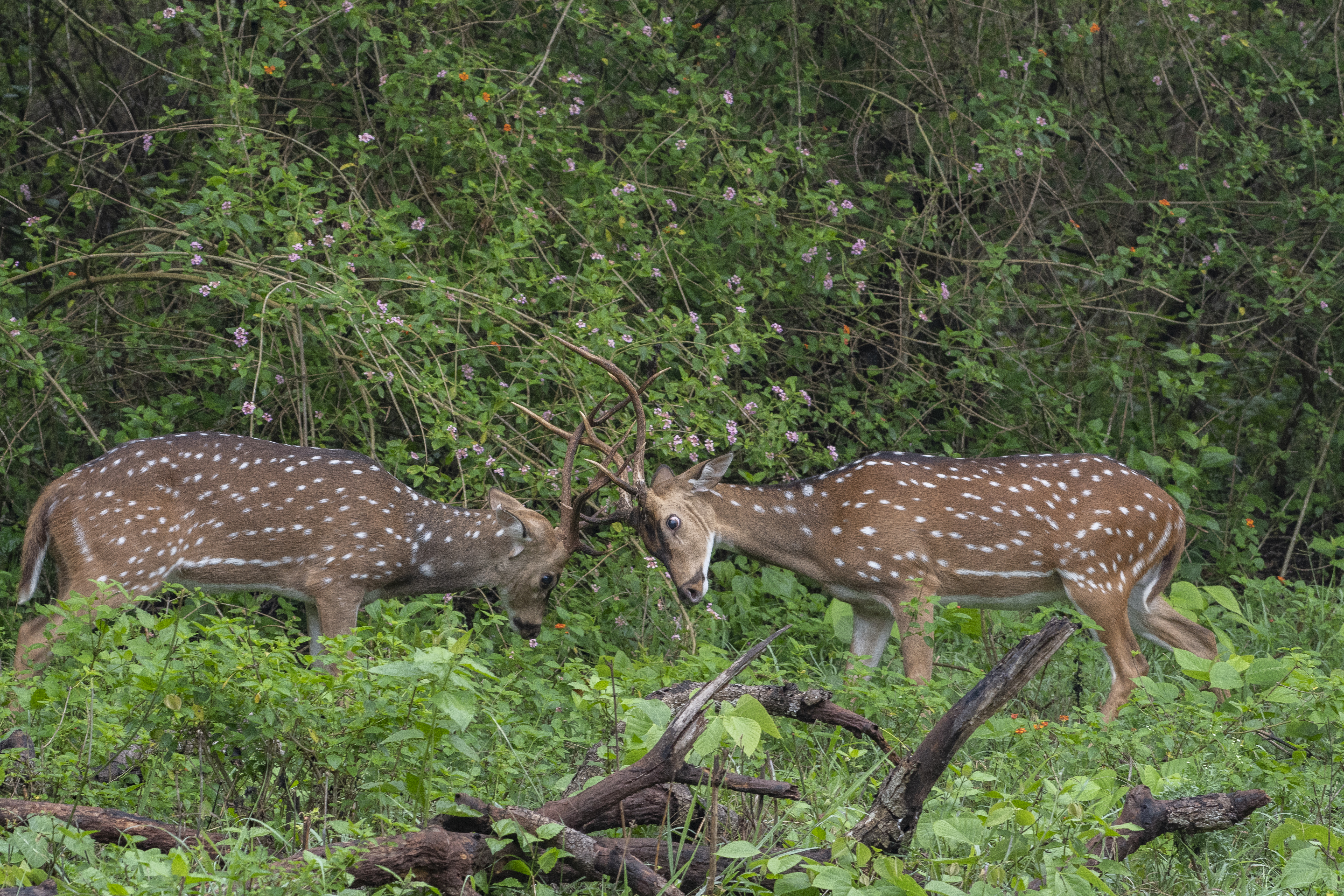
Then their behavior; the way the dominant alpha males strut. The stags with a full rack of horns, which they shed every year to grow a new pair; clothed first in skin called ‘velvet’ which they then rub off on trees until it is at first hanging in rags and then is totally cast away to show the shiny bone beneath. It is rutting season and you can hear the territorial braying call of the alpha males, challenging all takers. The stags eat very little during this time, being focused almost entirely on protecting their harem of hinds from other roving males, ready to give battle at the slightest provocation. When there is none they sometimes take out their testosterone on innocent bushes, bashing then to smithereens with their impressive horns.
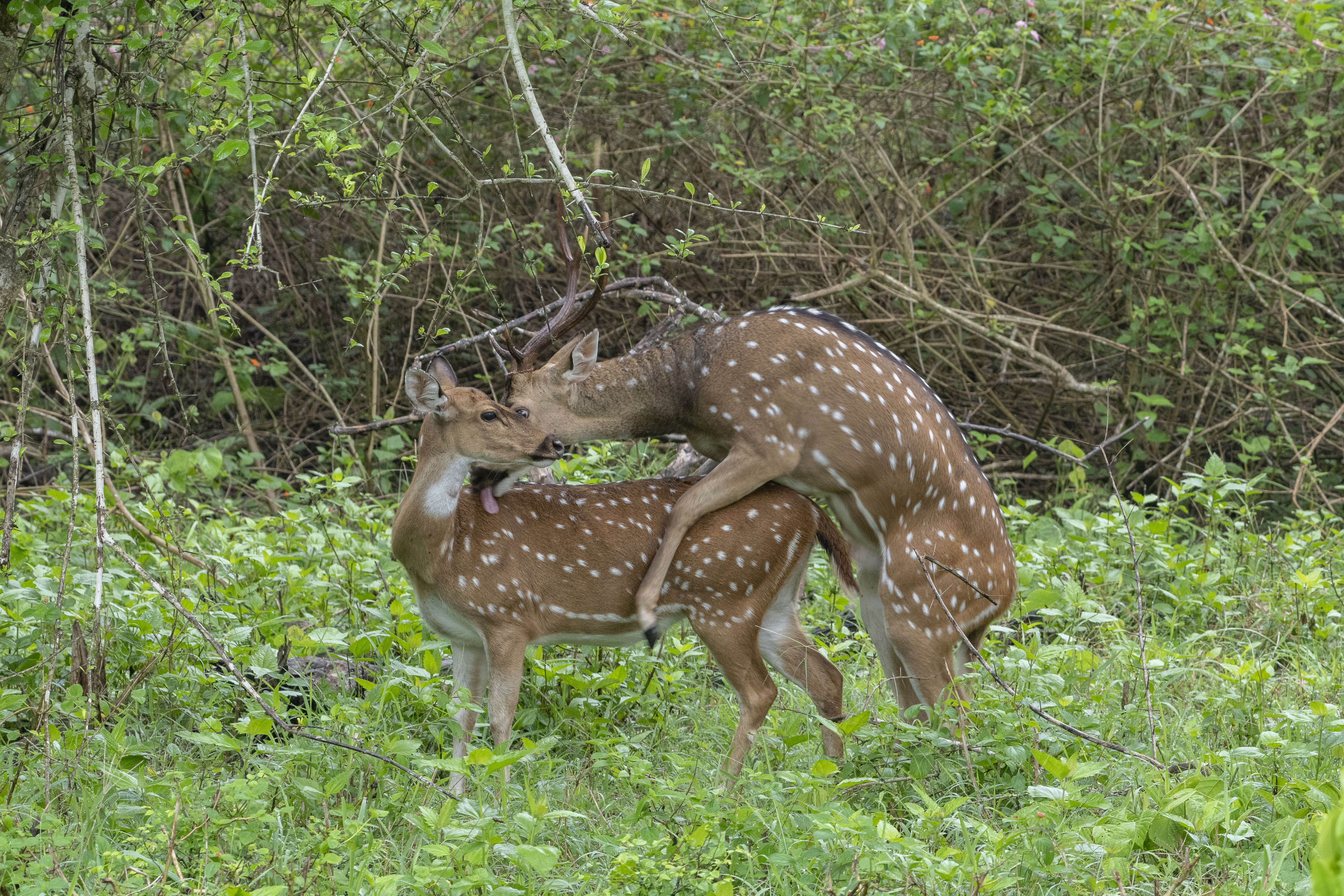 But if you are a Chital, no matter how impressive, you are at the bottom of the food chain. Everyone eats you and you eat grass. So, if you want to survive and live to tell tales of your life to your grandchildren you need to be extremely alert. Chital learn this lesson early in life. Those that don’t, never grow old. The result is that Chital will sound their typical alarm that sounds like a very high-pitched bark, at practically every suspicious movement. I have seen Chital calling when they see a Sloth bear, Dhole, Wild boar, eddies of wind rustling the bushes and simply because they imagined that they saw a tiger or leopard. But you can hardly blame them for this because they are No.1 on the menu of any predator on a keto diet. One of them calls while striking the earth with one forefoot with every call. The rest, run. Chital learn two CTS (Critical to Survival) lessons in life which are good lessons for us to learn also.
But if you are a Chital, no matter how impressive, you are at the bottom of the food chain. Everyone eats you and you eat grass. So, if you want to survive and live to tell tales of your life to your grandchildren you need to be extremely alert. Chital learn this lesson early in life. Those that don’t, never grow old. The result is that Chital will sound their typical alarm that sounds like a very high-pitched bark, at practically every suspicious movement. I have seen Chital calling when they see a Sloth bear, Dhole, Wild boar, eddies of wind rustling the bushes and simply because they imagined that they saw a tiger or leopard. But you can hardly blame them for this because they are No.1 on the menu of any predator on a keto diet. One of them calls while striking the earth with one forefoot with every call. The rest, run. Chital learn two CTS (Critical to Survival) lessons in life which are good lessons for us to learn also.
Lesson No. 1: Complacency is death.
Lesson No. 2: It is better to run twice than to be caught once.
 A much more reliable alarm giver is the Grey Langur. These have a symbiotic relationship with Chital. Langur feed in tree tops and drop more than they eat, of leaves and fruit which the Chital eat off the ground. And all bands of Langur have a sentinel, who doesn’t feed but sits on the highest branch of the tallest tree in the area and scans the forest for threats. When he sees anything suspicious, he calls the alarm and the Chital take off. Since this sentinel is watching from a vantage point, he is much more accurate in his risk assessment. When his shift is over, another of the tribe takes over and he goes to feed. It is amazing to see how this entire system works to the advantage of two different species who are united in threat. How much can we learn, I muse, about being united despite our differences because we face the same threats in our societies. Threats of moral degradation, drug abuse, unemployment, domestic violence, rape, murder, crime of different kinds; all of which don’t differentiate between us because criminals view all victims equally. Makes the forest with its lurking leopards and tigers seem positively safe.
A much more reliable alarm giver is the Grey Langur. These have a symbiotic relationship with Chital. Langur feed in tree tops and drop more than they eat, of leaves and fruit which the Chital eat off the ground. And all bands of Langur have a sentinel, who doesn’t feed but sits on the highest branch of the tallest tree in the area and scans the forest for threats. When he sees anything suspicious, he calls the alarm and the Chital take off. Since this sentinel is watching from a vantage point, he is much more accurate in his risk assessment. When his shift is over, another of the tribe takes over and he goes to feed. It is amazing to see how this entire system works to the advantage of two different species who are united in threat. How much can we learn, I muse, about being united despite our differences because we face the same threats in our societies. Threats of moral degradation, drug abuse, unemployment, domestic violence, rape, murder, crime of different kinds; all of which don’t differentiate between us because criminals view all victims equally. Makes the forest with its lurking leopards and tigers seem positively safe.
Langur are playful in the extreme. Most amusing are the young. They fight, chase each other up and down trees, making some leaps which almost amount to flight. I saw one young chap simply hanging from a vine and swinging back and forth. Just like a child on a swing. He was simply having fun. Another one climbed up behind his older sibling and used his tail for a swing. That didn’t last too long because the owner of the tail had a different opinion about this liberty. Some older individuals simply sit on a branch with their hind legs stretched out before them. Occasionally those lower in the pecking order come up behind them and start grooming them. I saw one Langur sitting on one branch and leaning out holding another with his hands while resting his chin on his hands, fast asleep. His instinct ensures that he doesn’t let go of the other branch even in his sleep. Our driver stopped the jeep under a tree, but noticed some Langur sitting directly above and very wisely and hurriedly moved us out from beneath them. I could almost hear one of them look down at us and say to the other, ‘Are you thinking what I am thinking?’ I didn’t fancy being the recipient of their donations.
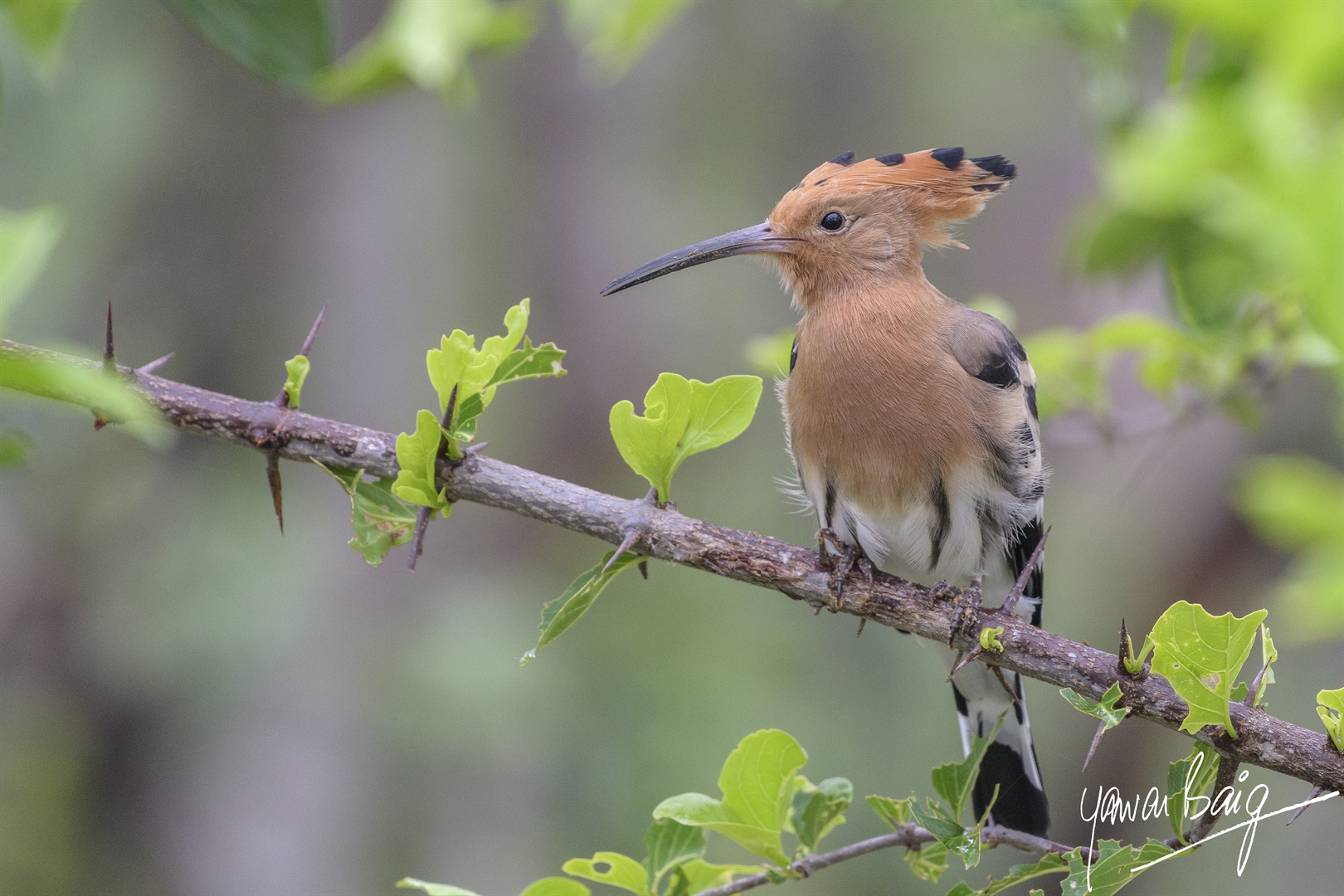
Nagarhole seems to have the highest population of Hoopoes and Flame-backed Woodpeckers that I have ever seen anywhere. Both are beautiful birds with the FBW males shining like jewels in the forest. They fly in their characteristic wavy flight and land on a tree trunk (unlike all other birds that land on branches) and immediately switch to the back of the trunk. Very infuriating because my camera can’t see through the tree. The females are not as colorful as the males, as is the case in most species of birds but have the same flight pattern and irritating habit of hiding from you.
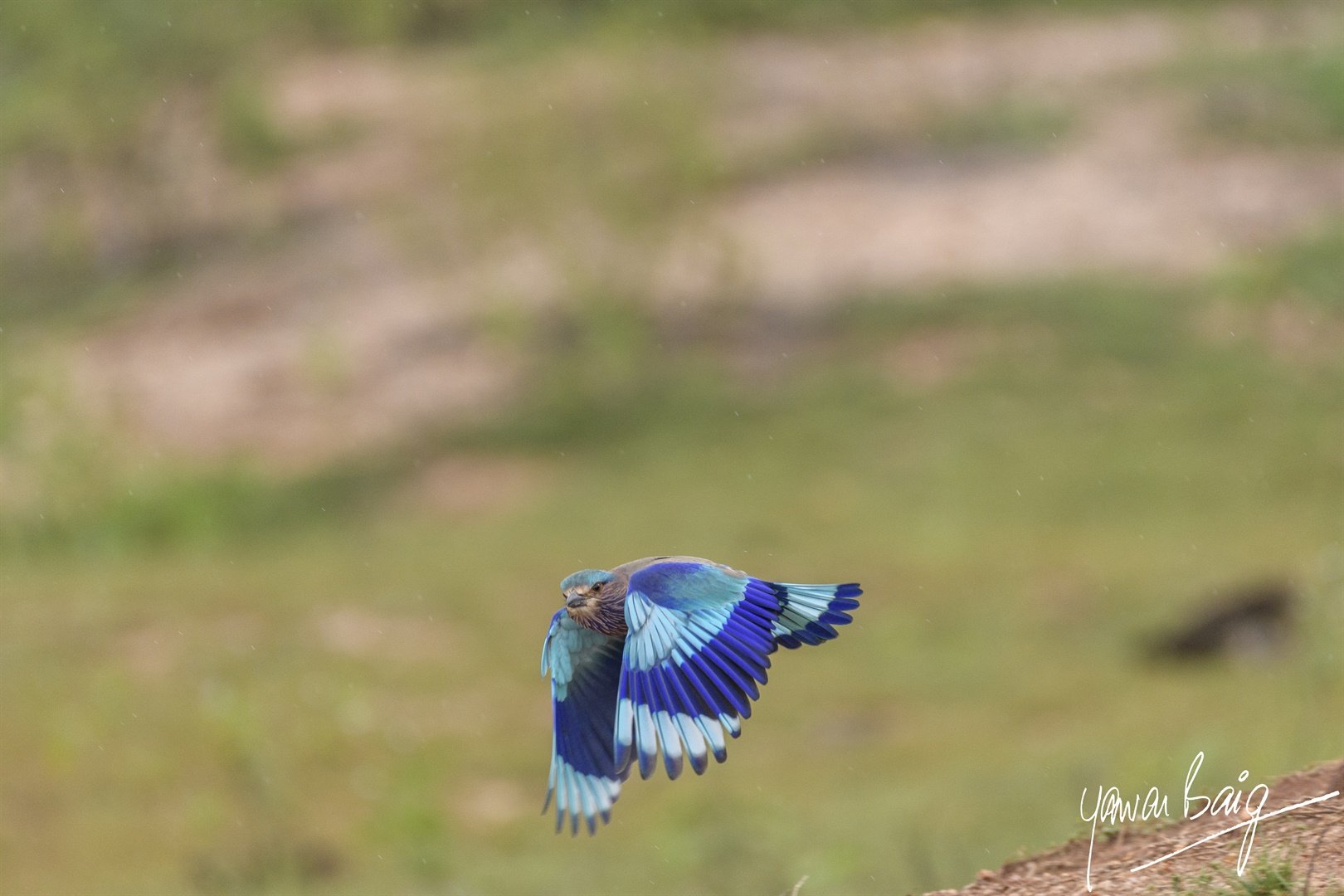
Trying to match the FBW is the Indian Roller. A brilliant blue bird whose brilliant lilac breast and fluorescent blue wing colors are spectacular in flight. What is best about the Indian Roller is his desire to be photographed. He is totally unfazed by the jeep or the chattering monkeys in it. He perches on a solitary branch of whichever short tree or bush that happens to be present and watches intently for his prey; worms, insects and whatever is small enough to appeal to his palate.
 Then he flies down, picks it up and flies back up to the same perch to eat it. This is an absolute boon for the photographer who can literally set his camera and wait to get the in-flight photos which are the best for this bird.
Then he flies down, picks it up and flies back up to the same perch to eat it. This is an absolute boon for the photographer who can literally set his camera and wait to get the in-flight photos which are the best for this bird.
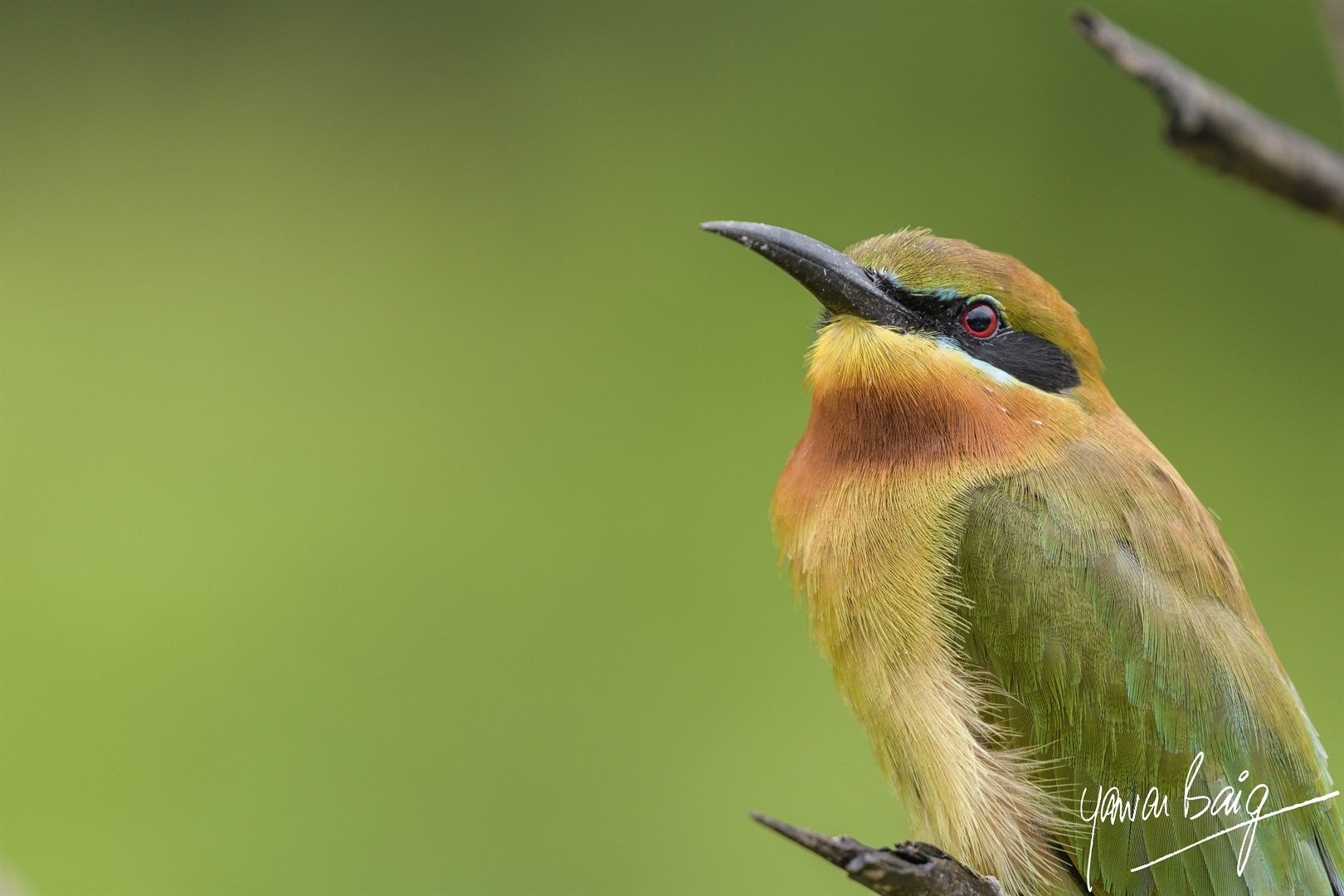
Another extremely photogenic bird is the Green Bee Eater and its various cousins. They are best seen in the early morning and sometimes in the late evening. They perch on any raised object, a dry branch, a rock or even a blade of tough high grass and watch for flying insects. As soon as they spot one, they swoop up, pluck it out of the air and return to their perch to eat it. Once again, this predictability of returning to the same perch and the fact that they are not spooked and liable to fly away at the slightest movement, makes them such favorites of photographers. Their brilliant green plumage, with some blue in some of the sub-species, their feathers which closeup look very fine hair, black beaks and shiny black eyes are a study in art. Birds in general afford one a look into their lives and behavior much more closely and readily than mammals and so are wonderful to photograph. Naturally, given their size (small birds) and that they fly about means that you need a camera and lens that can get you close to them. But if you have that, then there is endless joy in photographing birds.
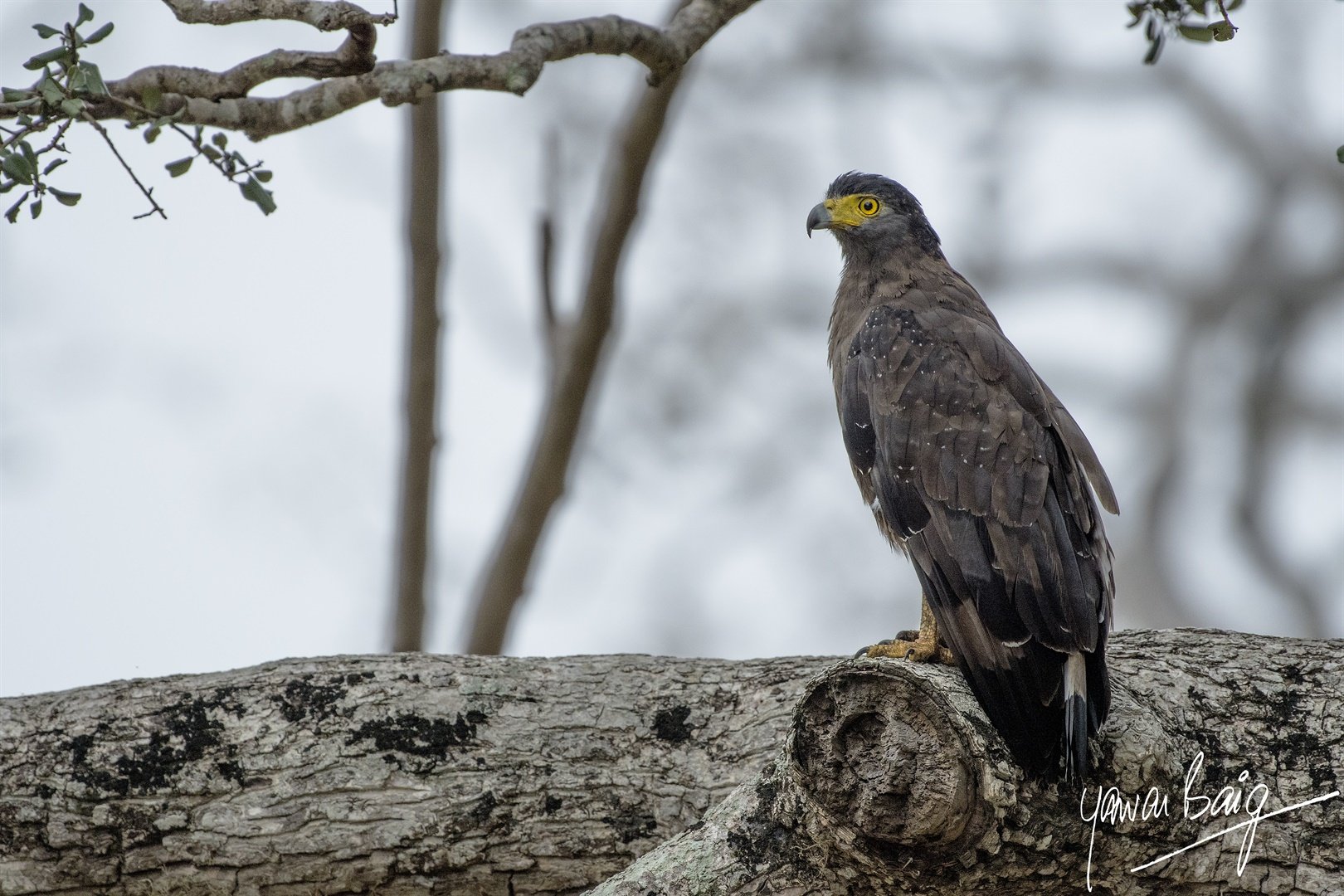
As I was trying to find a better perch for myself in the jeep that had (believe it or not, eleven adults in it) the driver whispered to me and I looked up to where he was pointing and loed and beheld a pair of Imperial Pigeons. They were in a fig tree, engrossed in gorging themselves on the fruit. While I took pictures of them, there was a shadow and the pigeons exploded out of the tree and headed for the Lantana bushes. I looked up to see a Brown Serpent Eagle.
 Pigeons are not his normal diet, but I am sure it wouldn’t object to a change of menu; something the pigeons understood very well. The eagle settled on the fig tree and so there was no chance of the pigeons returning, but I noticed a Monarch butterfly alight on a blade of tall grass. One single butterfly on a single blade of grass in just the right light. As I was clicking away, I saw a flash of yellow and there were a dozen Clouded Yellow (I think!!) butterflies on a damp patch in the road. Butterflies of all kinds settle on patches of moisture in the road and make wonderful objects of photographs with their brilliant colors, set off against the brown or black background of the road.
Pigeons are not his normal diet, but I am sure it wouldn’t object to a change of menu; something the pigeons understood very well. The eagle settled on the fig tree and so there was no chance of the pigeons returning, but I noticed a Monarch butterfly alight on a blade of tall grass. One single butterfly on a single blade of grass in just the right light. As I was clicking away, I saw a flash of yellow and there were a dozen Clouded Yellow (I think!!) butterflies on a damp patch in the road. Butterflies of all kinds settle on patches of moisture in the road and make wonderful objects of photographs with their brilliant colors, set off against the brown or black background of the road.
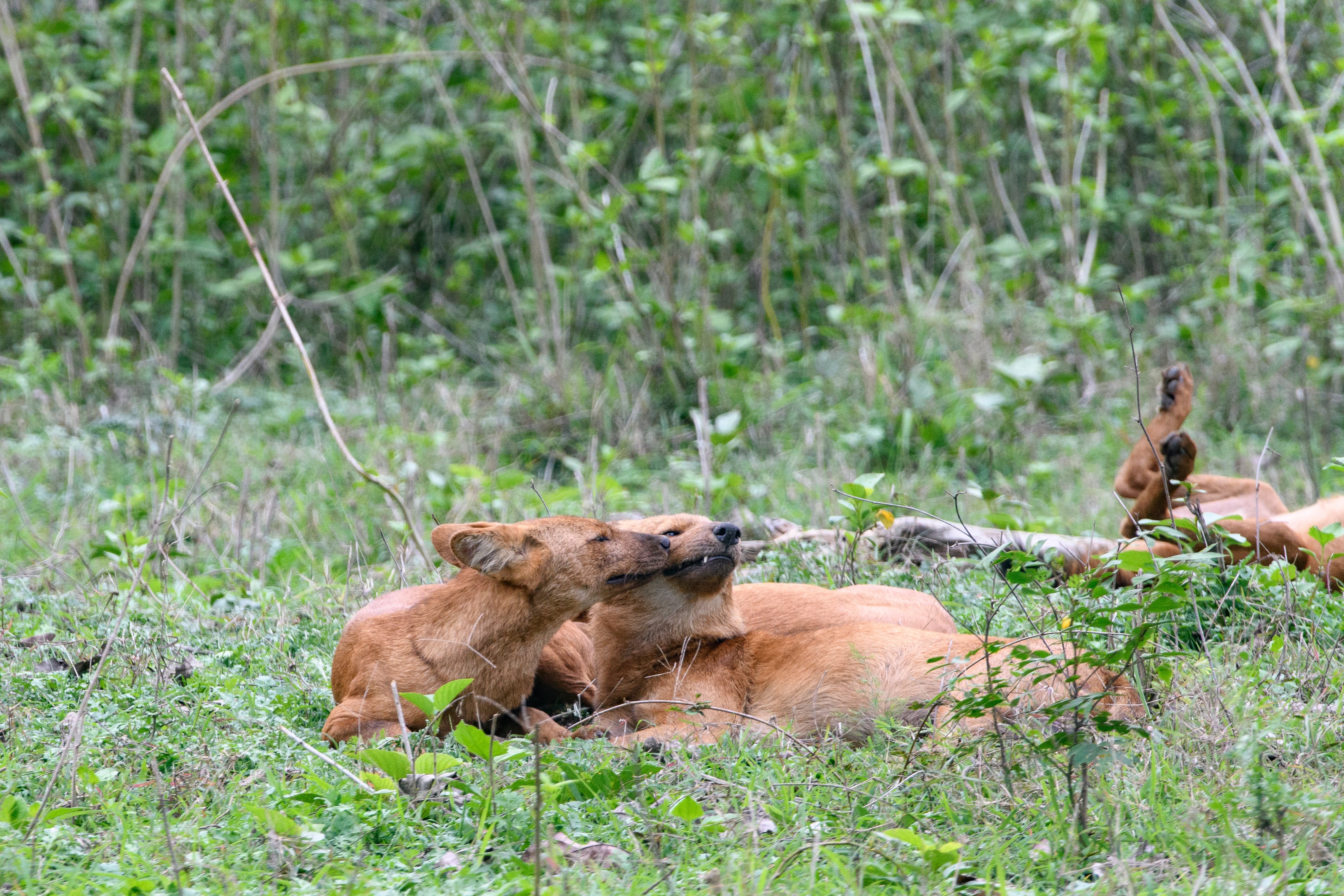 The driver moved along as our companions were getting bored with not seeing anything. We drove around a corner and came to a pack of Dhole (Indian Wild dogs), resting in the grass under some trees. The Dhole is a rich brown in color all over with a pointed face and a black tail. It is barkless and whistles. The dominant female and alpha male were sleeping. A couple of uncles were also resting, but one of them was sitting up, alert and watchful. In the jungle you have two choices; be alert or be eaten. There were four puppies who were being the pesky nuisance that all young are when adults are resting. Whistling and nuzzling and trying to crawl under their elders, failing which climbing all over them. What was amazing was the patience of the elders, who couldn’t have been enjoying this ‘affection’ but showed no irritation. The sentinel suddenly tensed but didn’t sound an alarm. I looked in the direction that he was pointing to and saw the most enormous Gaur bull that I have ever seen. Huge and black with his signature white socks, walking slowly and majestically, fearing nobody and nothing. He was followed by three cows, one of which was a subadult and so much more skittish. But the bull was a sight to behold.
The driver moved along as our companions were getting bored with not seeing anything. We drove around a corner and came to a pack of Dhole (Indian Wild dogs), resting in the grass under some trees. The Dhole is a rich brown in color all over with a pointed face and a black tail. It is barkless and whistles. The dominant female and alpha male were sleeping. A couple of uncles were also resting, but one of them was sitting up, alert and watchful. In the jungle you have two choices; be alert or be eaten. There were four puppies who were being the pesky nuisance that all young are when adults are resting. Whistling and nuzzling and trying to crawl under their elders, failing which climbing all over them. What was amazing was the patience of the elders, who couldn’t have been enjoying this ‘affection’ but showed no irritation. The sentinel suddenly tensed but didn’t sound an alarm. I looked in the direction that he was pointing to and saw the most enormous Gaur bull that I have ever seen. Huge and black with his signature white socks, walking slowly and majestically, fearing nobody and nothing. He was followed by three cows, one of which was a subadult and so much more skittish. But the bull was a sight to behold.
Just then a peacock screamed. What else can you call that sound? It is a communication call, ‘See what I am doing!’ What was he doing? Dancing to try to please a bevy of totally disinterested peahens. But he was spectacular to say the least.
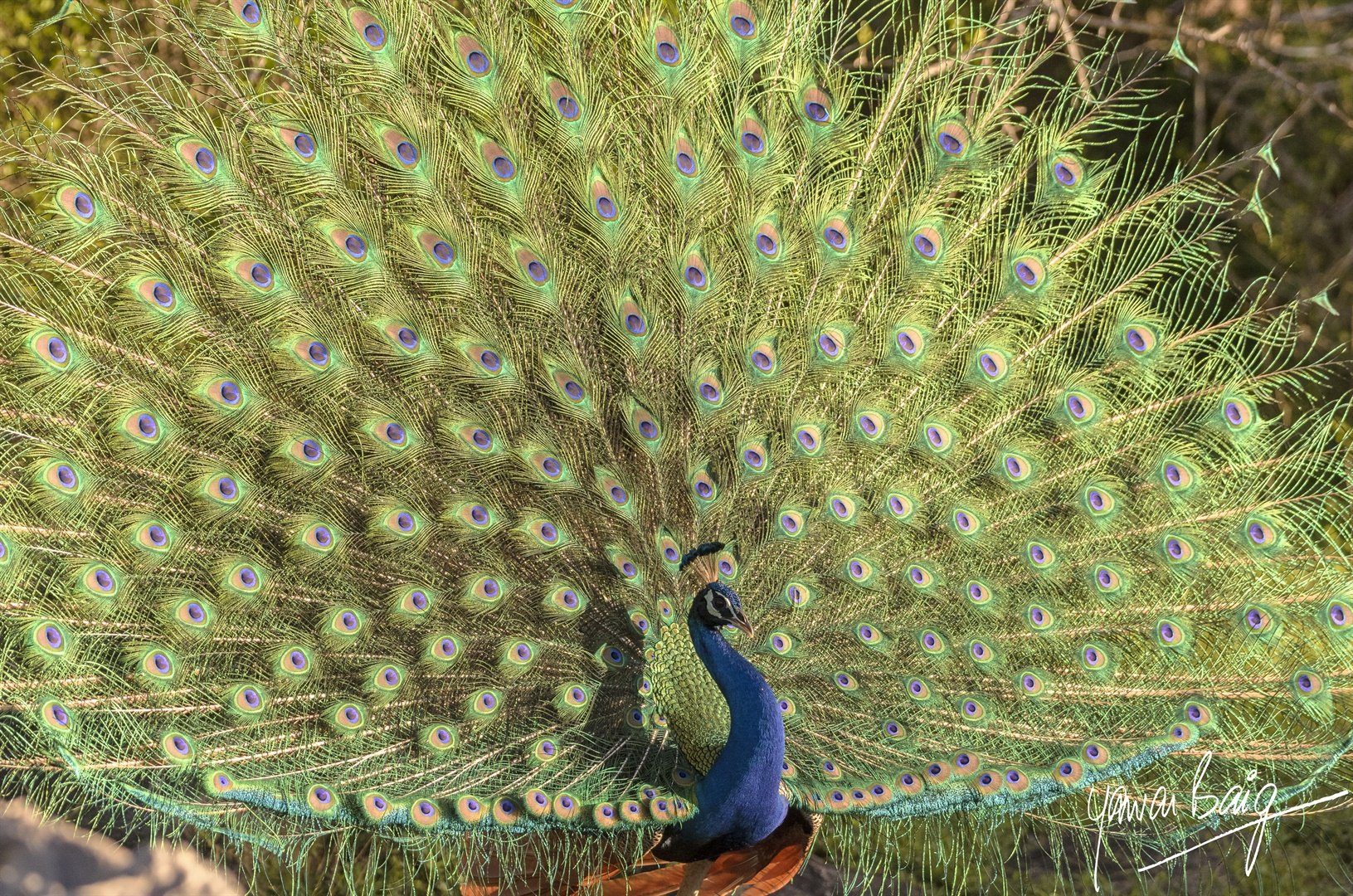
Still not having seen anything, the driver decided to go and investigate why two other jeeps that had passed us, hadn’t returned. We drove to a place where the road takes a steep dip between two low hillocks and there in the depression, we finally saw that after which we couldn’t say, ‘I saw nothing.’ A tigress sleeping.

Or more accurately, trying in to sleep. No sentinels here. Just a cat trying to get some sleep in a patch of sunlight while batting flies and mosquitoes which had other ideas. No sentinels because when you are the apex predator, you fear nobody and everyone else fears you. Our camera shutters sounded like machinegun fire as we took amazing action photos of a sleeping cat. Every time she flicked her tail, the cameras would go trrrrrrrrrrrr. Every time she rolled over they would go trrrrrrrrrrrrrrr. We watched her in action for over an hour, hunched up with our eyes glued to the viewfinders, our backs screaming in agony but who cares? A tiger is a tiger.
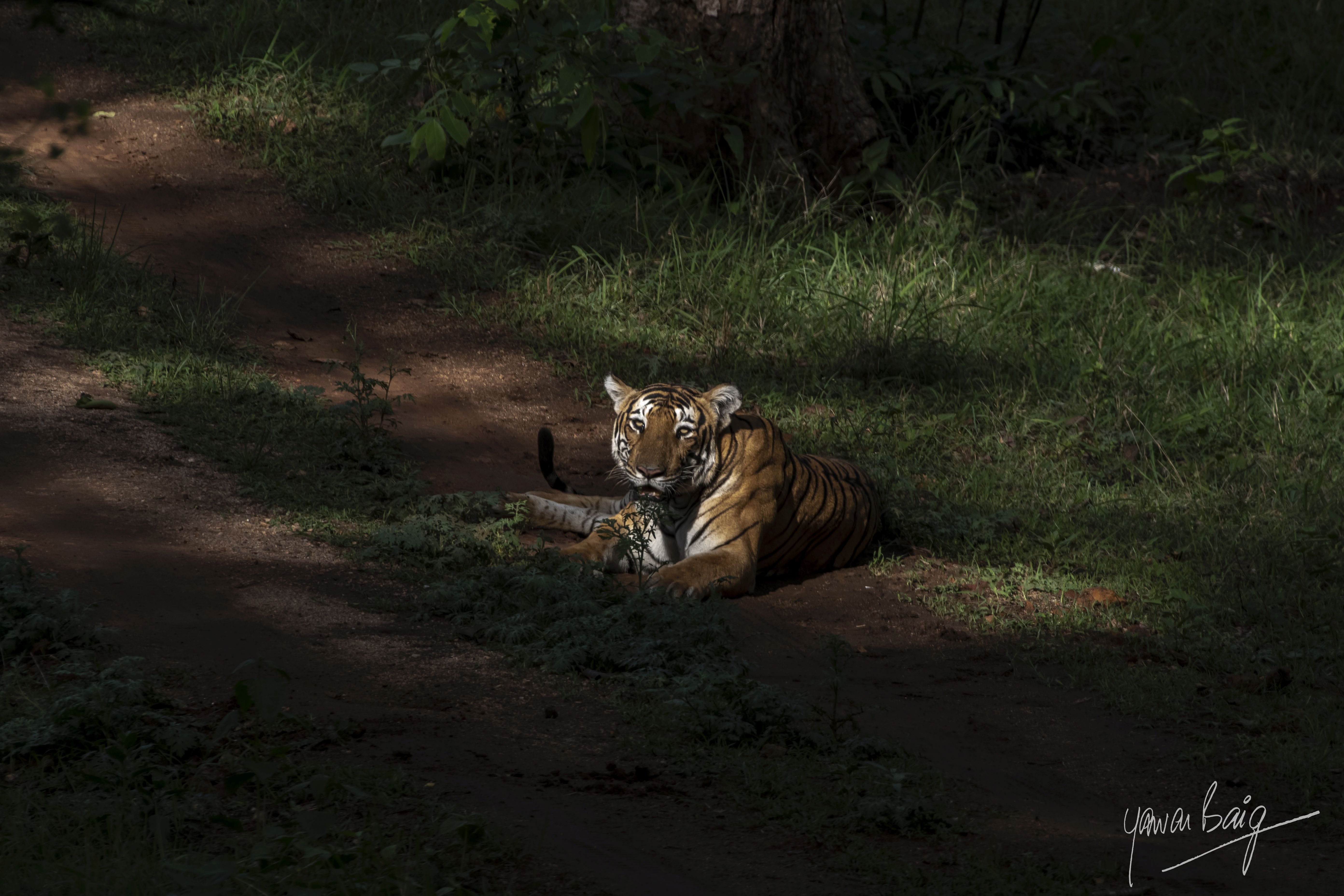
We returned with the light started failing and we had to get out before the designated time. “Did you see anything?” they asked.
“Yes,” we replied. “We saw a tiger.”
Nothing else, only a tiger. So, did we see anything or didn’t we?
What do you say?
Please log in to leave a comment
Loading comments...

I have formulated 6 rules which I call David’s rules. These are for anyone facing the big one ...

One of my friends who comes from ...
I have said this a million times, if I have said it once – the three crimes committed on society with society’s blessing are: Commerci...